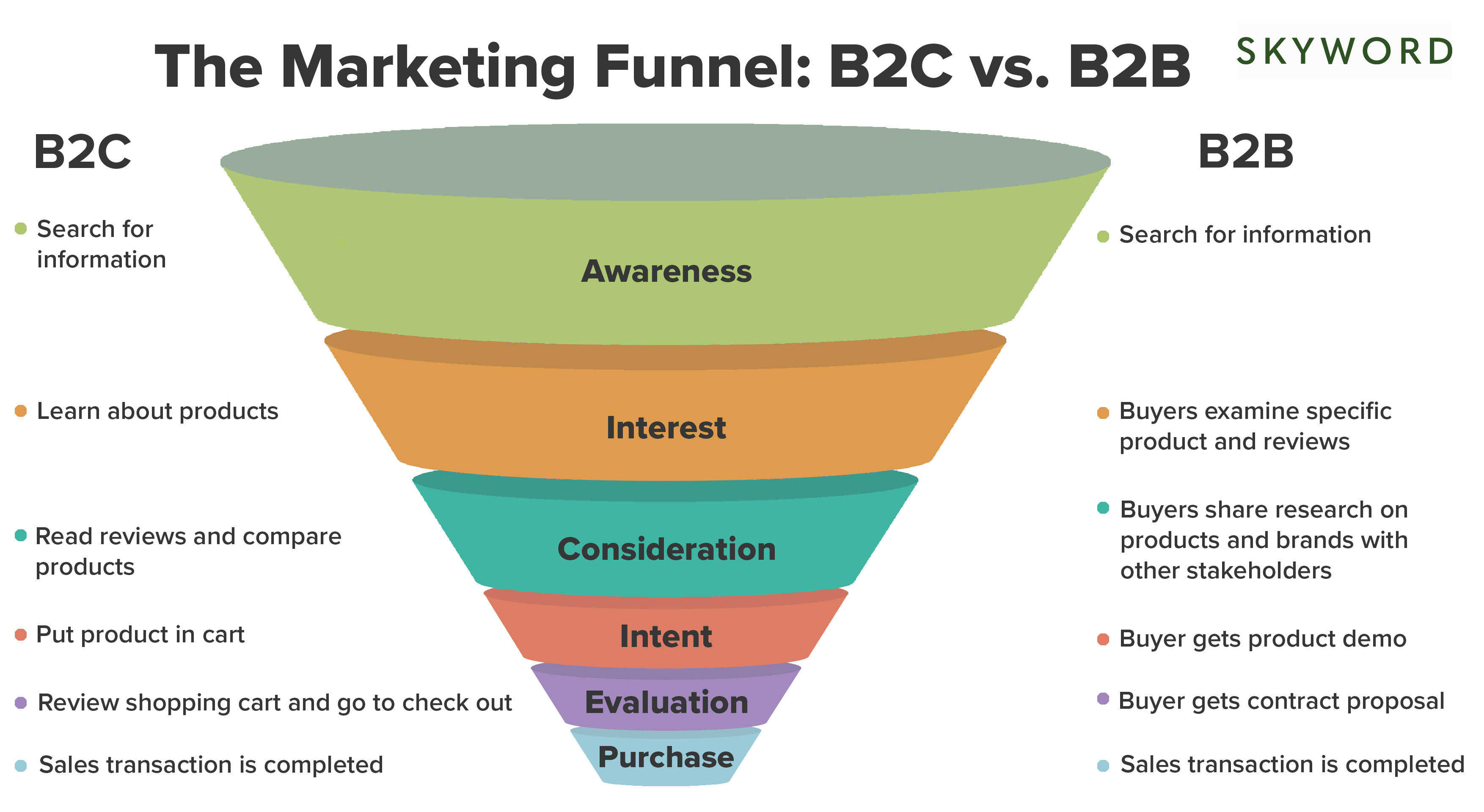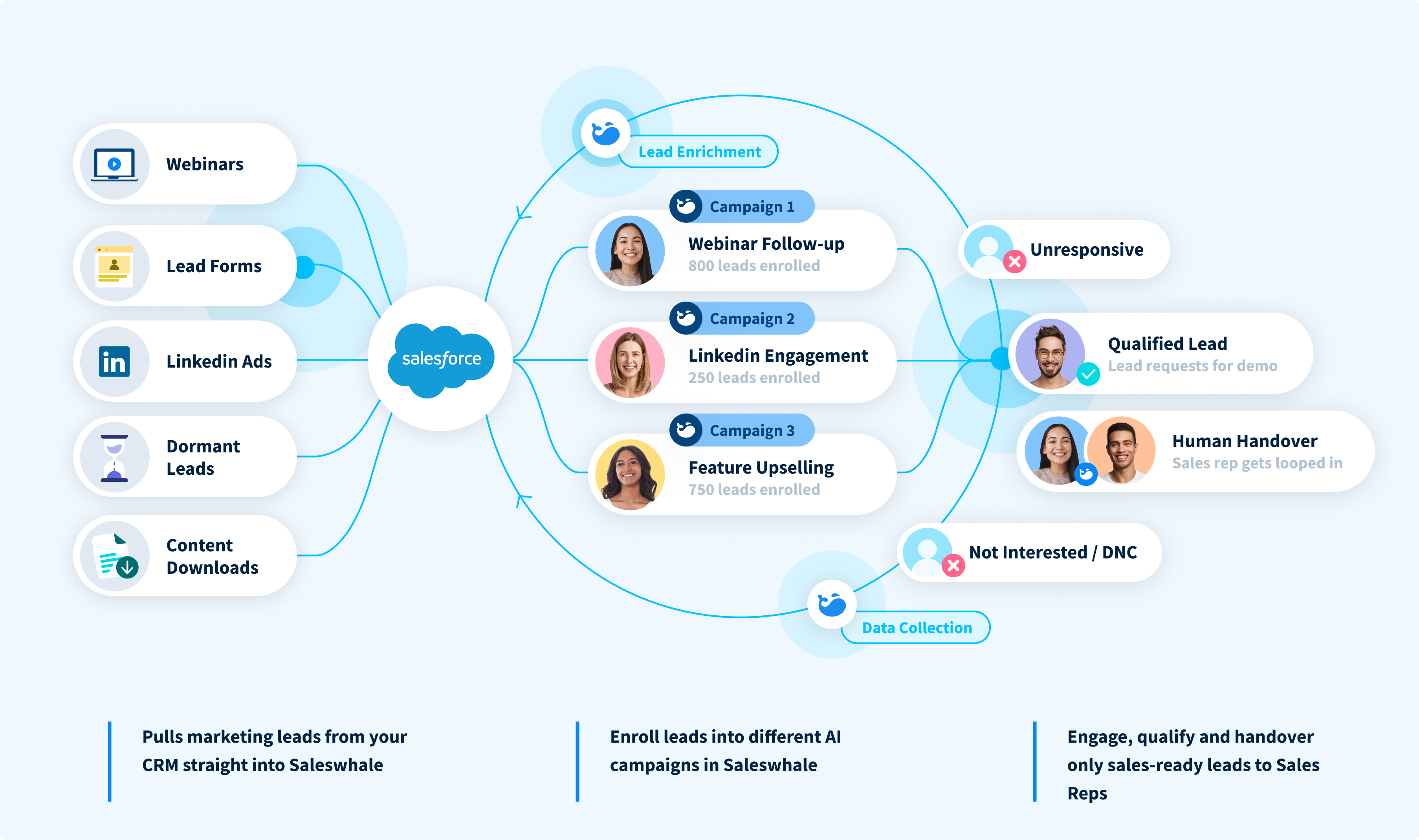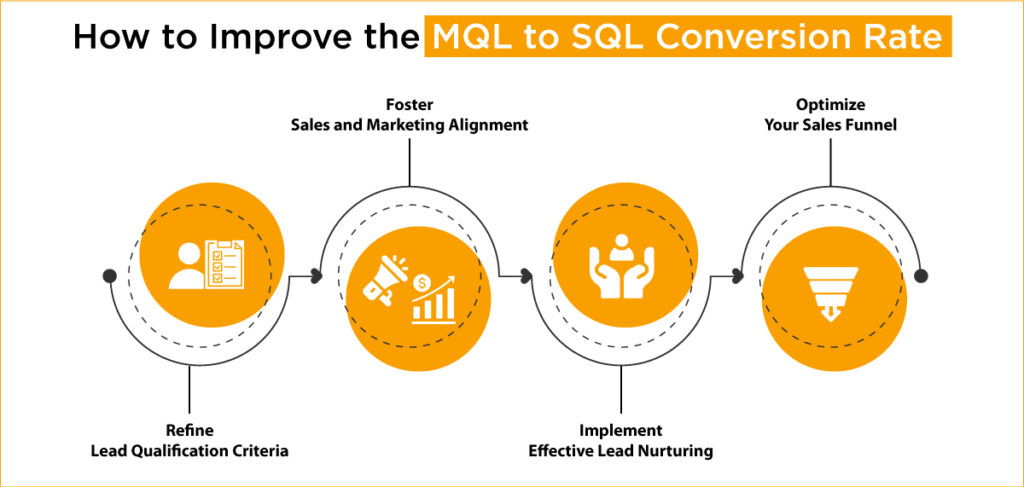Are you struggling to cut through the noise and make your brand stand out? It’s a challenge that every marketer faces in today’s saturated market. But what if there were proven strategies that could skyrocket your brand’s visibility and establish you as a market leader? In this blog post, we’re going to dive into five powerful demand generation strategies that not only capture attention but also drive engagement and conversions.
You’ll discover how to strategically position your brand, engage your audience across multiple channels, and outmanoeuvre your competitors—all without overwhelming your marketing budget.
- Understand the Core of Demand Generation: It’s a holistic strategy that focuses on building brand awareness and engaging potential customers throughout the entire buyer journey.
- Differentiate Demand Generation from Lead Generation: While both are essential, demand generation is about attracting and nurturing interest, whereas lead generation focuses on conversion.
- Leverage Top of Funnel Strategies: Create engaging, ungated content to increase brand visibility and drive initial interest without creating barriers for your audience.
- Nurture with Middle of Funnel Strategies: Use long-form content and personalised engagement to build trust and guide prospects through their decision-making process.
- Conduct Competitor Research: Regularly analyse your competitors to refine your demand generation strategies and identify opportunities in the market.
- Adopt a Multi-Channel Approach: Engage your audience across various platforms to enhance your brand’s visibility and build consistent messaging.
- Create High-Quality Content: Invest in valuable, engaging content that resonates with your target audience and drives action.
- Define Your Ideal Customer Profile: Tailor your demand generation efforts by understanding your ideal customer, ensuring your messaging and strategies align with their needs and pain points.
What is Demand Generation?
Demand generation is a form of inbound marketing that serves as the overarching framework for your entire marketing strategy—often referred to as the marketing funnel. It’s designed to spark interest in your brand’s products or services.
A demand generation strategy goes beyond simply moving a lead through the funnel; it involves the full customer journey, starting from initial awareness right through to lead generation. At its core, demand generation asks: “How does your target audience perceive your brand?” It’s about identifying how familiar potential customers are with your offering and finding strategic ways to introduce your brand to new markets. Crucially, it’s about building trust and positioning your business as an authoritative solution to a pressing problem. In B2B demand generation, this becomes particularly critical, as businesses seek partners they can rely on to help them achieve their own growth objectives.
What Matters Most?
A successful demand generation strategy hinges on creating genuine relationships with potential customers. Our clients discover that prioritising value through high-quality content fosters trust and loyalty, significantly enhancing engagement. Typically, integrating data-driven insights allows for continuous refinement of tactics, ensuring alignment with audience preferences and behaviours. Moreover, adopting account-based marketing approaches can effectively target high-value accounts, making your messaging more relevant and impactful.Get In Touch
Demand Generation vs. Lead Generation
To fully grasp demand generation, it’s essential to distinguish it from lead generation, as both require distinct approaches. The key differences can be summarised as follows:
- Demand generation focuses on drawing in new customers, while lead generation concentrates on converting them.
- Demand generation prioritises building brand awareness and authority, whereas lead generation zeroes in on generating and nurturing leads.
- A comprehensive demand generation strategy integrates all aspects of marketing, from identifying and engaging potential prospects to nurturing them through the entire sales cycle.
What is the difference between demand generation and account based marketing
While both account-based marketing (ABM) and demand generation strategies share the common goal of driving revenue and acquiring new customers, their approaches differ significantly.
Demand generation follows a funnel approach, starting with a broad audience, gradually narrowing it down as you nurture prospects through various stages of the buyer’s journey. It seeks to engage and convert a larger audience by generating awareness, sparking interest, and guiding prospects towards conversion.
Conversely, ABM adopts a reverse-funnel strategy. It begins with pinpointing specific high-value accounts that align with the business’s ideal customer profile. Instead of casting a wide net, ABM focuses intensely on a smaller group of carefully selected accounts. The emphasis is on deeply understanding these accounts’ specific challenges and tailoring personalised strategies to engage and convert them into long-term, loyal customers.
While demand generation tactics aim to scale marketing efforts and capture a broader market, ABM places a premium on personalisation, offering bespoke, one-to-one interactions that cater to each account’s unique needs. The goal in ABM is not just to convert prospects but to foster enduring relationships that maximise customer lifetime value. By treating each account as a unique “market of one,” ABM helps to cultivate lasting partnerships and reinforce brand loyalty.

Benefits of a Demand Generation Strategy
The primary advantage of a well-executed demand generation strategy is the increase in both lead generation and the subsequent adoption of your brand’s products or services. However, the benefits of a comprehensive demand generation programme extend far beyond just lead creation.
Cost Efficiency and Reduction
One of the significant financial benefits of a demand generation strategy is its ability to drive overarching cost reductions. Many brands spend vast amounts of capital on retaining customers, whereas a robust demand generation programme can build a strong reputation early on, minimising the need for costly retention efforts later in the marketing cycle. By establishing itself as a trusted, authoritative figure in the market, a brand can cultivate deeper relationships with its audience, fostering long-term loyalty. This not only reduces future marketing spend but also contributes to improved metrics such as return on ad spend (ROAS) and lower cost per click (CPC).
Brand Awareness and Industry Reputation
Arguably, one of the most valuable outcomes of an effective demand generation strategy is the boost to brand awareness and overall market reputation. A well-crafted programme doesn’t just introduce your brand to potential customers—it integrates your brand into their daily decision-making processes, positioning your business as an indispensable resource. The demand generation tactics employed at this stage go beyond merely driving sales; they create an enduring relationship between the brand and the customer, which can result in long-term brand advocacy.
The brand reputation established during the early stages of demand generation often leads to high-quality leads, but the ripple effect is more profound. It can position your company as a thought leader, making your brand synonymous with reliability and expertise. This can be further enhanced through the strategic use of webinars, case studies, and other educational content, which help carve out a niche for your brand as an industry authority.
What are the steps in the demand generation process
1. Understand and Validate Your Ideal Customer Profile (ICP) and Target Account List
The first step in building a successful demand generation strategy is to clearly define who you are marketing to. This process is best done in collaboration with your sales team to ensure that both teams are aligned and working towards the same demand generation goals.
In today’s account-based marketing landscape, it’s highly likely you already have a target account list (TAL) in place. If not, you can start by identifying key characteristics such as demographics, firmographics, and technographics that define your ideal customers. Once this is mapped out, the next step is to outline the key personas at each target account. Keep in mind that decision-making within B2B organisations often involves multiple stakeholders, ranging from champions to decision-makers. Understanding each stakeholder’s pain points and aligning your demand gen tactics to address these is essential for success.
2. Define Which Strategy (or Mix) Works Best for Your Business
There are three core strategies you might consider, depending on your business model and the audience you’re targeting:
- 1:1: This is the most targeted approach, often used in account-based marketing (ABM), where resources are dedicated to engaging a specific high-value account. This strategy works well for companies with larger budgets and those seeking long-term relationships with high-revenue potential clients. It’s essential that each interaction is fully personalised to resonate with that particular account.
- 1 to few: This is the most common approach for many mid-sized businesses. Instead of focusing on individual accounts, you target small segments of your total addressable market (TAM), tailoring your messaging to address shared characteristics. This allows for some personalisation but at a more scalable level than 1:1.
- 1 to many: This strategy is akin to more traditional B2B marketing methods. It involves casting a wide net and engaging a larger audience with general yet relevant messaging. While the personalisation may not be as deep as in 1:1 or 1
approaches, it is still essential to ensure that the content is engaging enough to convert leads into the pipeline.
3. Identify the Content Needed to Fuel Your Demand Generation Strategy
A successful demand generation strategy relies heavily on high-quality content. In today’s B2B environment, most buying decisions are made after extensive research, often before a prospect even speaks to a sales representative. Therefore, having an arsenal of diverse, informative content is critical.
To nurture prospects, it’s important to strike a balance between gated and ungated content. Long-form content such as eBooks, whitepapers, and case studies can be used to capture lead information, while short-form content like blog posts, videos, and infographics should be freely available to build trust and authority.
A well-structured content strategy that offers value at every stage of the buyer’s journey will not only increase demand generation goals but also elevate your brand’s reputation in the market.
4. Define a Nurture Strategy to Guide Prospects through the Buyer Journey
Nurturing prospects is not limited to email marketing. An effective demand generation strategy involves an omni-channel approach to ensure consistent and relevant touchpoints throughout the buyer journey. While email is a valuable tool, you can expand your nurturing efforts through display remarketing, content syndication, and more personal channels like direct mail or events.
An effective nurture strategy ensures that no potential lead falls through the cracks. Continually engaging with your prospects using various demand generation tactics increases the likelihood of conversion and moves them further down the funnel. The key is to ensure that each follow-up feels meaningful and adds value, rather than being repetitive or generic.

What is the best way to set up a demand gen funnel of inbound leads
Creating a demand generation strategy that consistently drives inbound leads requires a well-structured approach. Below is a detailed guide to building a funnel that not only attracts but nurtures prospects towards conversion.
Step 1: Understand Your Audience
Understanding your audience is foundational to any funnel, but it is particularly critical for a demand generation strategy. Without a clear grasp of your audience’s needs, preferences, and behaviours, you risk wasting valuable resources—both time and money—on leads that may have no interest in your offering.
Start by developing a robust lead scoring model and an accurate Ideal Customer Profile (ICP). This involves analysing both current and past customer data to segment your audience effectively. Lead scoring enables you to categorise prospects based on their engagement with your brand, helping you determine where they are in their buyer journey. Simultaneously, refining your ICP ensures that your demand generation tactics are directed at the right customers—those most likely to convert and add long-term value.
We recommend utilising account-based marketing (ABM) data to refine your ICP further. Content engagement data, for example, can be invaluable in shaping a more accurate profile of your target customers.
Source: TheMXGroup
Step 2: Build Awareness (Top of Funnel – TOFU)
The next step in your demand generation strategy is to build awareness at the top of the funnel. This stage is all about ensuring that potential customers know you exist and begin to engage with your brand.
Content marketing, social media, and SEO optimisation are key demand gen tactics for driving traffic to your site. Creating engaging and interactive content, such as polls, quizzes, or videos, helps to build brand awareness while simultaneously measuring the level of interest in your offering. Consider removing or minimising content gating at this stage to reduce friction in your funnel. Ungated content can deliver immense value while still allowing you to capture valuable insights into your audience’s engagement levels.
Platforms like Turtl Analytics enable you to measure these insights in real time, providing granular details on individual reader engagement. By offering value at the TOFU stage, you ensure your brand remains top-of-mind, thereby increasing the likelihood of moving prospects further down the funnel.
Step 3: Generate Interest (Middle of Funnel – MOFU)
Once potential customers are aware of your brand, the goal is to deepen their interest in what you offer. This stage of your demand generation strategy should be heavily content-focused, providing your audience with detailed solutions to their problems.
At this point, it is essential to identify the pain points of your target customers and deliver content that clearly demonstrates how your product or service can resolve these issues. Long-form content, such as blogs, guides, and eBooks, works well in the middle of the funnel, as it gives your prospects more in-depth information about your solutions. Enhancing your presence on social media and driving engagement through educational posts can further solidify their interest.
Step 4: Nurture and Prove Value (MOFU)
Nurturing is a critical component of any demand generation strategy, especially at the middle of the funnel. This is where you continue to build trust with your audience, ensuring that they don’t move to a competitor’s funnel before making a decision.
At this stage, it’s all about proving your value. Offer personalised content that addresses specific pain points and provides concrete solutions. This might include case studies showing how other businesses have benefitted from your service or templates that prospects can use to see immediate results. Tools like cost-saving calculators are particularly effective here, as they allow prospects to independently assess the value of your offering, potentially pushing them closer to becoming a marketing qualified lead (MQL).

Our Tactical Recommendations
In our experience, effective demand generation combines diverse content formats and targeted outreach. Using storytelling in content creates emotional connections, which can drive higher engagement. We typically recommend leveraging social media platforms and email marketing for consistent touchpoints that nurture leads throughout their journey. Additionally, incorporating retargeting adverts ensures that your brand remains top of mind for potential leads who have previously engaged with your content. These tactical steps can significantly elevate your demand generation strategy, leading to improved conversion rates.Get In Touch
Demand Generation Pitfalls
Effective execution of a demand generation strategy requires avoiding common pitfalls that can derail your marketing efforts. Below are key challenges and solutions to ensure optimal performance.
1. Failure to Organise Marketing Data
In today’s data-driven marketing landscape, efficient use of customer data is critical to success. Whether you are designing a marketing campaign or constructing a sales funnel, accurate and well-managed data is essential for upward movement.
Over the past few years, many brands have concentrated on gathering first-party buyer intent data through various demand generation tactics such as lead generation and nurturing campaigns. However, without a well-structured plan for organising this data, many companies fail to fully capitalise on its value. The inability to manage high-quality data is a significant demand generation pitfall, leading to lost revenue and inefficiencies. In fact, research from Gartner reveals that 60% of businesses do not account for the financial costs associated with poor-quality data, resulting in significant financial losses.
To mitigate this risk, brands should take the following steps:
- Appoint a Chief Data Officer to oversee data integrity and management.
- Utilise automation tools such as CRM systems to streamline and optimise customer data processes.
- Implement continuous monitoring and quality control of your data to ensure long-term accuracy.
2. Lack of a Demand-Generating Content Marketing Strategy
Today’s B2B buyers begin their journey with an online search, and content is the key to appearing in top search results. However, many companies make the mistake of assuming that simply publishing content will drive demand. Without a cohesive demand generation strategy that includes well-targeted content, your marketing efforts are unlikely to yield results.
To avoid this pitfall, it’s crucial to implement a strong content marketing strategy that is designed to spark demand. Consider these effective demand generation tactics:
- Create urgency by offering limited-time deals or exclusive giveaways.
- Incorporate user-generated content to build trust and engagement with your audience.
- Partner with relevant content creators and bloggers to expand your reach.
- Tailor your content to your audience’s specific pain points by offering high-value resources such as eBooks, podcasts, or other thought leadership pieces.
- Develop exclusive, locked content for subscribers to enhance engagement and generate leads.
Source: CMI
3. Poorly Defined Ideal Customer Profile (ICP)
One of the most significant barriers to a successful demand generation strategy is an ill-defined Ideal Customer Profile (ICP). Without a clear and specific ICP, your messaging will lack focus, and you’ll fail to connect with the right audience.
A vague ICP leads to diluted value propositions and marketing campaigns that do not resonate with the most relevant prospects. Here are some common ICP mistakes and how to avoid them:
- Being too broad: Trying to target too wide an audience results in generic content that doesn’t engage anyone effectively. Instead, focus on creating specific, detailed personas that match the people most likely to benefit from your product.
- Assuming your perspective matches your customers’: Assuming you know your customers’ challenges without engaging them directly can lead to ineffective solutions. Conduct research and ask your customers about their real pain points and needs.
- Creating unrealistic personas: Avoid making assumptions based on incomplete data. Instead, use analytics to develop realistic personas grounded in actual customer behaviours and preferences.
- Over-emphasising your product: It’s easy to become too focused on selling your product and forget to educate customers on how your company’s expertise can help solve their broader challenges. A well-rounded demand generation strategy includes educational content that builds trust and positions your brand as a valuable partner.
- Acting prematurely: Taking action without a fully fleshed-out ICP can result in wasted resources. Ensure your personas are thoroughly defined before implementing your demand generation tactics.







